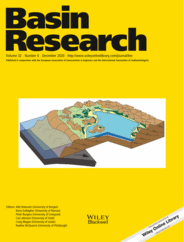
Full text loading...

Clastic sedimentary rocks are best dated by isotopic analysis of closely interbedded volcanic rocks (PLAN A). Fossils can also provide age assement of sufficient precision (PLAN B) but when volcanic rocks are not present or fossils are not diagnostic, PLAN C may be ncessary. This contribution discusses some details of using geochronology of detrital grains to determine the depositional age of clastic rocks.
Placing geologic events in a temporal framework is essential to telling the story of Earth history. However, clastic sedimentary rocks can be difficult to date in an absolute reference because they are made up of grains that are older than the rock in which they are now found, and some clastic rocks do not contain fossils that allow precise reference to the Geologic Timescale. For such rocks, the isotopic dating of detrital minerals can be used to estimate the time of deposition; the clastic rock must be younger than the youngest grain analysed. However, many researchers eschew this simple and straightforward approach in favour of schemes that estimate the maximum allowable depositional age as the weighted mean of the age of several grains, chosen by a variety of selection criteria. This is a mistake; in the absence of a geochemical resemblance apart from the similarity of their age, detrital grains should not be assumed to have originated in the same system and therefore any averaging or other manipulation of such data is statistically invalid and produces results without geologic significance. In the absence of interbedded volcanic rocks or index fossils, dating of detrital minerals can be an important aid in understanding the time of deposition of clastic rocks, but the best estimate will come from taking note of the youngest single grain and not by inappropriately averaging data.
]
Article metrics loading...

Full text loading...
References


Data & Media loading...

